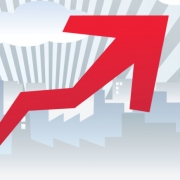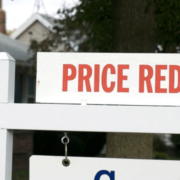Mortgage Market Statistics
The Mortgage Market:
- 6.03 million: The number of homeowners with mortgages (out of a total of 9.8 million homeowners in Canada)
- 1.6 million: The number of Home Equity Line of Credit (HELOC) holders
- 11%: The percentage drop in resale activity compared to 2017
- Resale activity is down 15% from the all-time record set in 2016.
Mortgage Types and Amortization Periods
- 68%: Percentage of mortgages in Canada that have fixed interest rates (The percentage is the same for mortgages taken out in 2018)
- 27%: Percentage of mortgages that have variable or adjustable rates (30% for mortgages taken out in 2018)
- 5%: Percentage that are a combination of fixed and variable, known as “hybrid” mortgages (2% for purchases in 2018)
- 89%: Percentage of mortgages with an amortization period of 25 years or less (84% for homes purchased between 2015 and 2018)
- 11%: Percentage with extended amortizations of more than 25 years (16% for recent purchases between 2015 and 2018)
- 22.2 years: The average amortization period
Actions that Accelerate Repayment
- ~33%: Percentage of mortgage holders who voluntarily take action to shorten their amortization periods (unchanged from recent years)
- Among all mortgage holders:
- 15% made a lump-sum payment (the average payment was $22,100)
- 16% increased the amount of their payment (the average amount was $450 more a month)
- 8% increased payment frequency
Mortgage Sources
- 62%: Percentage of borrowers who took out a new mortgage during 2017 or 2018 who obtained the mortgage from a Canadian bank
- 28%: Percentage of recent mortgages that were arranged by a mortgage broker
- This is down substantially from 39% reported in the previous report in 2017 (and 43% in 2016; 42% in 2015). While Dunning says the latest 2018 figure could be the result of a statistical anomaly, he also surmises that broker share may in fact be down. “The lending environment has become more challenging for brokers, especially since changes to mortgage insurance regulations are making it much more difficult for small lenders to raise funds via mortgage-backed securities,” he wrote. “It also appears that some of the large banks are becoming less reliant on the broker channel.”
- 5%: Percentage of recent borrowers who obtained their mortgage through a credit union (vs. 7% of all mortgages)
Interest Rates
- 3.09%: The average mortgage interest rate in Canada
- This is up from the 2.96% average recorded in 2017
- 3.31%: The average interest rate for mortgages on homes purchased during 2018
- 3.28%: The average rate for mortgages renewed in 2018
- 68%: Of those who renewed in 2018, percentage who saw their interest rate rise
- Among all borrowers who renewed in 2017, their rates dropped an average of 0.19%
- 3.40%: The average actual rate for a 5-year fixed mortgage in 2018, about two percentage points lower than the posted rate, which averaged 5.26%
Mortgage Arrears
- 0.24%: The current mortgage arrears rate in Canada (as of September 2018)
- “The arrears rate… ( 1-in-424 borrowers)…is very low in historic terms,” Dunning wrote.
Equity
- 74%: The average home equity of Canadian homeowners, as a percentage of home value
- 4%: The percentage of mortgage-holders with less than 15% home equity.
- 56%: The average percentage of home equity for homeowners who have a mortgage but no HELOC
- 58%: The average equity ratio for owners with both a mortgage and a HELOC
- 80%: The equity ratio for those without a mortgage but with a HELOC
- 92%: Percentage of homeowners who have 25% or more equity in their homes
- 50%: Among recent buyers who bought their home from 2015 to 2018, the percentage with 25% or more equity in their homes
Equity Takeout
- 10% (960,000): Percentage of homeowners who took equity out of their home in the past year (up slightly from 9% in 2017)
- $74,000: The average amount of equity taken out (up substantially from $54,500 in 2017)
- $72 billion: The total equity takeout over the past year (up from $47 billion in 2017)
- $38 billion was via mortgages and $34 billion was via HELOCs (the HELOC portion is up from $17 billion in 2016/17)
- Most common uses for the funds include:
- $23.8 billion: For investments
- $17 billion: For home renovation and repair
- 55% of homeowners have done some kind of renovation at some point. 27% renovated between 2015 and 2018 with an average spend of $41,000.
- $16.4 billion: For debt consolidation and repayment
- $8.6 billion: For purchases
- $6.2 billion): For “other” purposes
- Equity takeout was most common among homeowners who purchased their home during 2000 to 2004
Sources of Down payments
- 20%: The average down payment made by first-time buyers in recent years, as a percentage of home price
- The top sources of these down payment funds for all first-time buyers:
- 52%: Personal savings (vs. 45% for those who purchased between 2015 and 2019)
- 20%: Funds from parents or other family members (vs. 16% over the last four years)
- 19%: Loan from a financial institution
- 9%: Withdrawal from RRSP (this has been trending down over the last decade)
- 98 weeks: The amount of working time at the average wage needed to amass a 20% down payment on an average-priced home
- This is down from 105 weeks in 2017, but nearly double the figure from the 1990s.
Homeownership as “Forced Saving”
- ~43%: Approximate percentage of the first mortgage payment that goes towards principal repayment (based on current rates)
- Down from ~50% in 2017, but up from 25% 10 years ago
- Dunning notes that rapid repayment of principal means that “once the mortgage loan is made, risk diminishes rapidly”
- He added that “net cost” of homeownership, “which should include interest costs, but not the principal repayment,” is low in historic terms when considering incomes and relative to the cost of renting equivalent accommodations. “This goes a long way to explaining the continued strength of housing activity in Canada, despite rapid growth of house prices,” Dunning writes.
A Falling Homeownership Rate
- 67.8%: The homeownership rate in Canada in 2016 (the latest data available)
- Down from 69% in 2011
Consumer Sentiment
- 90%: The percentage of homeowners who are happy with their decision to buy a home
- 7%: Of those who regret their decision to buy, the regret pertains to the particular property purchased
- Just 4% regret their decision to buy in general
Outlook for the Mortgage Market
- Data on housing starts suggests housing completions in 2019 will decrease slightly compared to 2018. “The data on housing starts tells us that housing completions in 2019 will be slightly lower than in 2018, but will still be at a level that results in a significant requirement for new financing,” Dunning writes.
- “Another factor in the past has been that low interest rates mean that consumers pay less for interest and, therefore, are able to pay off principal more rapidly,” he adds. “Recent rises in interest rates are resulting in a slight reduction in the ability to make additional repayment efforts, and this will tend to fractionally raise the growth rate for outstanding mortgage principals.”
- 3.5%: The current year-over-year rate of mortgage credit growth (as of September 2018)
- Vs. an average rate of 7.3% per year over the past 12 years
- Dunning expects outstanding mortgage credit to rise to $1.60 trillion by the end of 2019, from $1.55 trillion at the end of 2018
Survey details: This report was compiled based on online responses compiled in November 2018 from 2,023 Canadians, including homeowners with mortgages, homeowners without mortgages, renters and those living with family.
Source: Canadian Mortgage Trends







